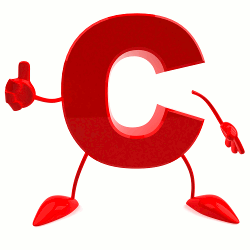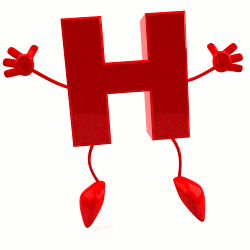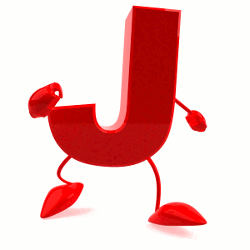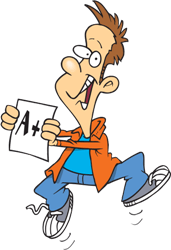CH and J Sounds
CH: (China, century, watch)
J: (Germany, educate , judge )
English Pronunciation, Lesson 29
In English, the CH and J sounds are often studied together because they are made in the same part of the mouth and pronounced in a similar way. In this lesson, we will learn how to make the voiceless CH sound (China, century) and the voiced J sound (Germany, jump).
Click Here for Step-by-Step Rules, Stories and Exercises to Practice All English Tenses
How to pronounce the CH and J sounds
The voiceless (unvoiced) CH sound (IPA symbol: tʃ

The voiced J sound (IPA symbol: dʒ ) can be found in English words such as Germany, large, joy, educate, edge and judge.

Voiced and voiceless sounds
What are voiced
and voiceless
sounds? Let's review.In the English language, we use many voiced sounds. That means that the vocal cords vibrate when you say that sound. The J sound is a voiced sound because you use your voice to make the sound.
The CH sound is a voiceless or unvoiced sound because the vocal cords do not vibrate when you make the sound. Instead, you release air out of your mouth to make the sound.
To make the CH and J sounds, air is stopped from leaving your mouth for a short time. The tip of the your tongue presses against the back of your top teeth to stop air from leaving your mouth. The sides of your tongue press against the sides of your upper teeth.
You make the CH sound by releasing the stopped air through your teeth. It is similar to the way the T sound is made, but your tongue is further back on the top tooth ridge.
You make the J sound by releasing the air and voicing the sound. It is similar to the way the D sound is made.
Watch this short video from Rachel's English to see how to make the CH sound and the J sound:
Have you watched the video? Good! Now, let's practice these two sounds!
Let's practice!
Practice the voiceless CH soundPractice the voiceless CH sound by saying these words aloud. Remember that the CH sound is not voiced. Your vocal cords do not vibrate when you make this sound. Make sure you are only using air to make the sound.
There are three spellings for the CH sound: ch, tch, and t (+u).
Let's practice these three spellings of this sound!
ch spelling
This is the most common way to spell the CH sound. Ch always makes the CH sound.
- China
- Chinese
- chip
- chat
- church
- pinch
- touch
- teach
- teacher
- catch
- watch
- batch
- itch
- kitchen
- witch
- century
- spatula
Practice the voiced J sound
Now, let's practice the voiced J sound. Remember to use air and your voice to make this sound.
There are four spellings of the J sound: g, dg, j, and d (+u).
Let's practice each spelling.
g spelling
When the letter G is followed by an E or an I, it is sometimes pronounced as a J sound.
The g (+i) spelling is often (but not always) pronounced as a hard G sound (examples: girl, gift, give). Here are a few words that are pronunced with the J sound:
- giant
- imagine
- apologize
- giraffe
The g (+e) spelling is usually pronounced as a J sound like in these words:
- Germany
- German
- large
- charge
- age

- gentle
- fudge
- budge
- bridge
- judge
- judge
- jump
- joy
- joke
- eject
- July
- June
When the letter D is followed by the letter U, it is sometimes pronounced as a J sound like in these words:
- educate
- schedule
- procedure
- graduate
- individual
Most words with a du spelling are pronounced with a regular D sound.
Examples:
- during
- reduce
- dust
Remember, you can always use a dictionary or online pronunciation guide to learn the correct pronunciation of each new word.
Finally, practice the sounds side-by-side
Remember to voice the J sound and use only air for the CH sound!
| CH | J |
| China | Germany |
| child | jump |
| batch | age |
| watch | bridge |
| church | judge |
| century | educate |
Now say these sentences out loud.
The CH sounds are in blue. The J sounds are in green:
1) Teach the children at the church.
2) The spatula is in the kitchen.
3) We eat cheese and chips on a china plate.
4) The gentle giant jumped for joy!
5) I enjoy eating jam and jelly.
6) The gentleman from Germany had a procedure in June.
7) In July, I will educate the cheerful child in Chinese and German.
8) Just apologize to the teacher for touching the giraffe.
9) The joyful judge ate fudge in the kitchen.
10) Imagine a giant, gentle witch with an itch.
Have you finished this lesson? If you want to review this lesson, you can return to the top of the page. Keep practicing the words and sentences to master these sounds.

Let's move on...
List of Lessons
Lesson 01: International
Phonetic Alphabet (IPA)
Lesson 02: Word
Stress and Syllables
Lesson 03: Long E
sound (meet,
see)
Lesson 04: Short I
Sound (sit,
hit)
Lesson 05: UH Sound
(put, foot)
Lesson 06:
OO Sound (moon,
blue)
Lesson 07: Short E
sound (pen, bed)
Lesson 08: Schwa
Sound (the, about)
Lesson 09: UR Sound (turn, learn)
Lesson 10: OH Sound (four, store)
Lesson 11: Short A
Sound (cat, fat)
Lesson 12: UH Sound (but, luck)
Lesson 13: Soft A
Sound (arm, father)
Lesson 14: Long O
Sound (boat,
know)
Lesson 15: Long A
Sound (say, pain, make)
Lesson 16: Short O
Sound (not, off, socks)
Lesson 17: Diphthong
(a combination of two vowel sounds)
Lesson 18: P Sound
(cup, punch, pull) and B sound (cub, bunch, bull)
Lesson 19: The Nasal
Sounds (M, N, NG)
Lesson 20: F Sound (four, lift, graph, tough) and V Sound (love, knives, grave, vine)
Lesson 21: W Sound (wow, quit, where)
Lesson 22: R Sound (red, sorry, write)
Lesson 23: H Sound (he, behind, who)
Lesson 24: T Sound (top, it, later) and D Sound (do, had, made)
Lesson 25: S Sound (sit, box, cats) and Z Sound (zip, buzz, boys)
Lesson 26: K Sound (kid, talk, black) and G Sound (go, big, dog)
Lesson 27: L Sound:
Light L & Dark L (tall,
like, English)
Lesson 28: Y
Consonant Sound (yes,
you, beyond)
Lesson 29: CH Sound (China, century, watch) and J Sound (Germany, educate , judge)
Lesson 30: TH
Consonant Sounds – voiced TH sound (the,
father, them) and voiceless
(unvoiced) TH sound (think,
birthday, south)
Lesson 31: SH
(shop, chef, special) and ZH (usual, massage, Asia)
Lesson 32: T and TT Sounds (true T sound, D sound, stop sound, silent T)
Get Updates, Special Offers, and English Resources
Download your FREE GIFT (the first two chapters of
English Short Stories Book and Workbook)
as soon as you join!

By submitting your email, you consent to receiving updates and newsletters from us and to the sharing of your personal data with third parties for the purposes of sending you communications. We will not spam you. You can unsubscribe at any time. For more information, please see our privacy policy.





